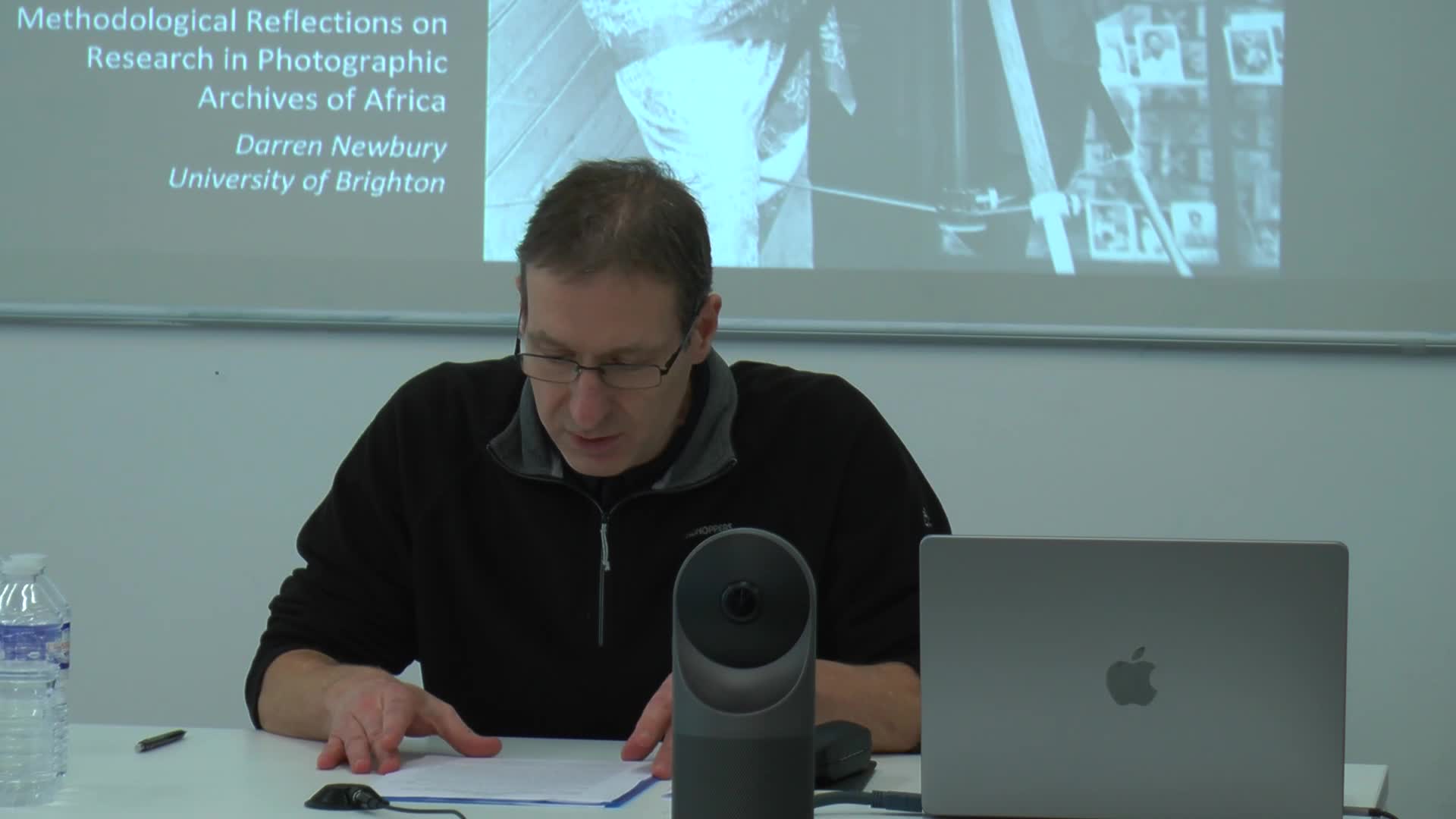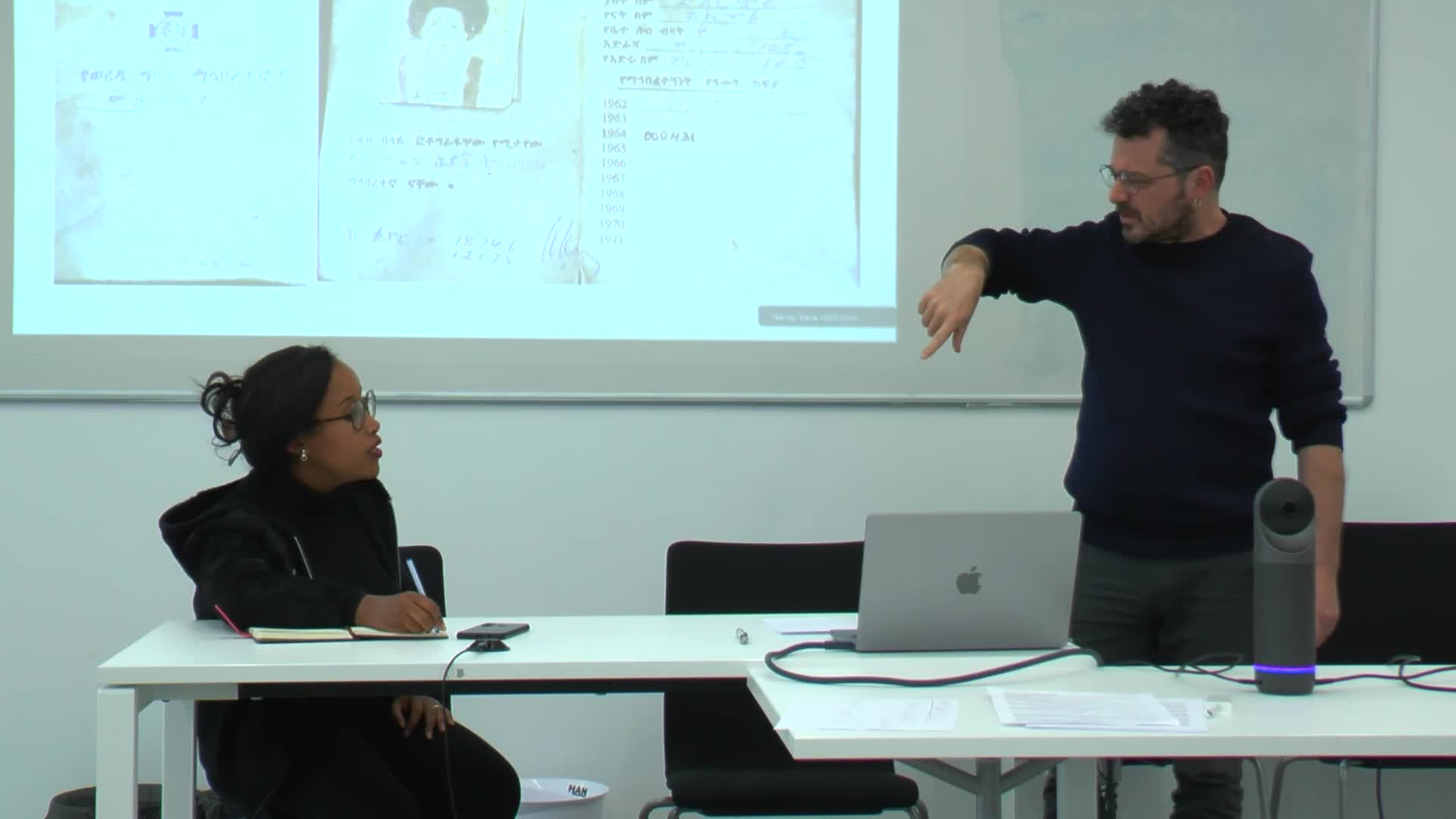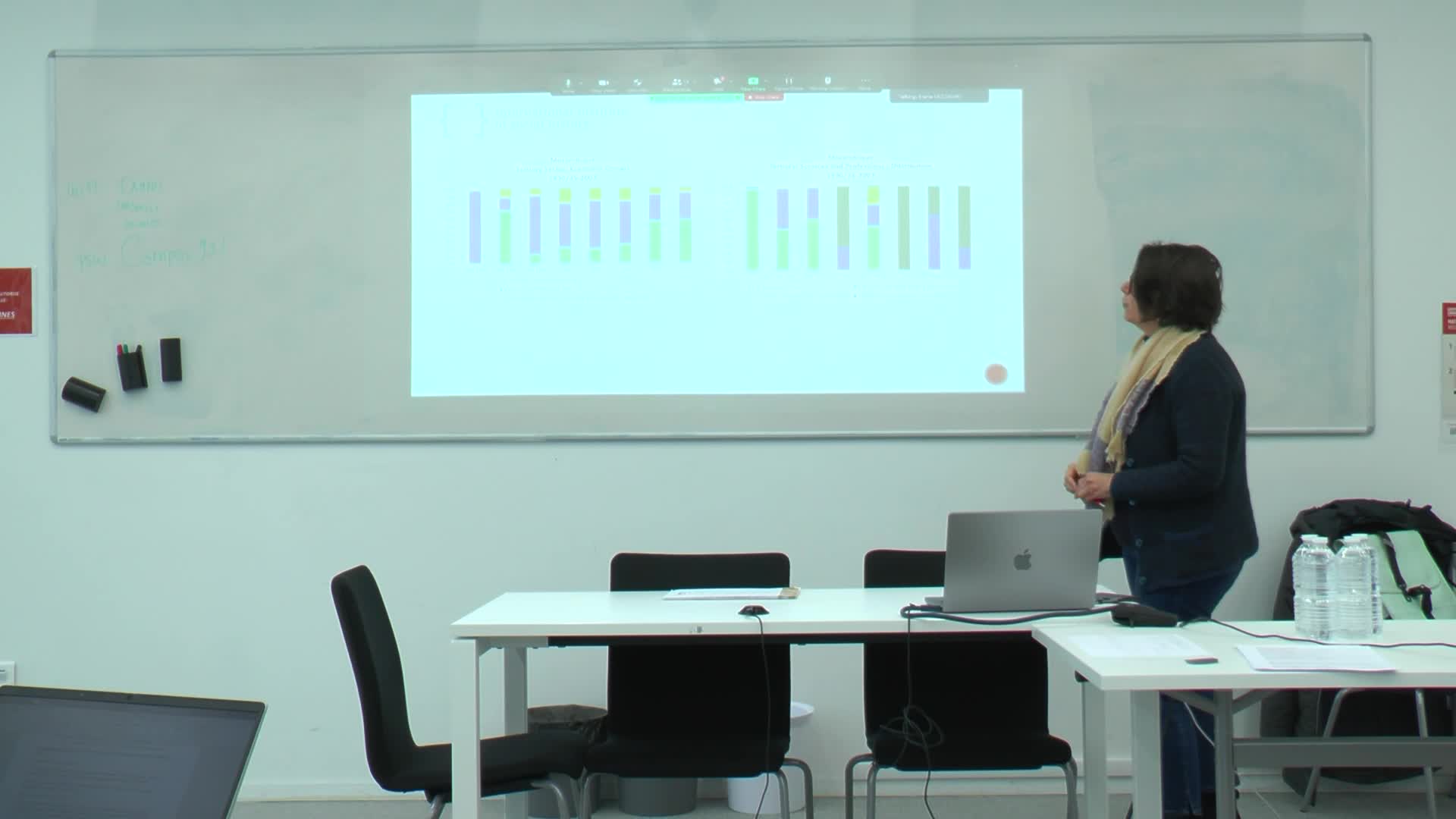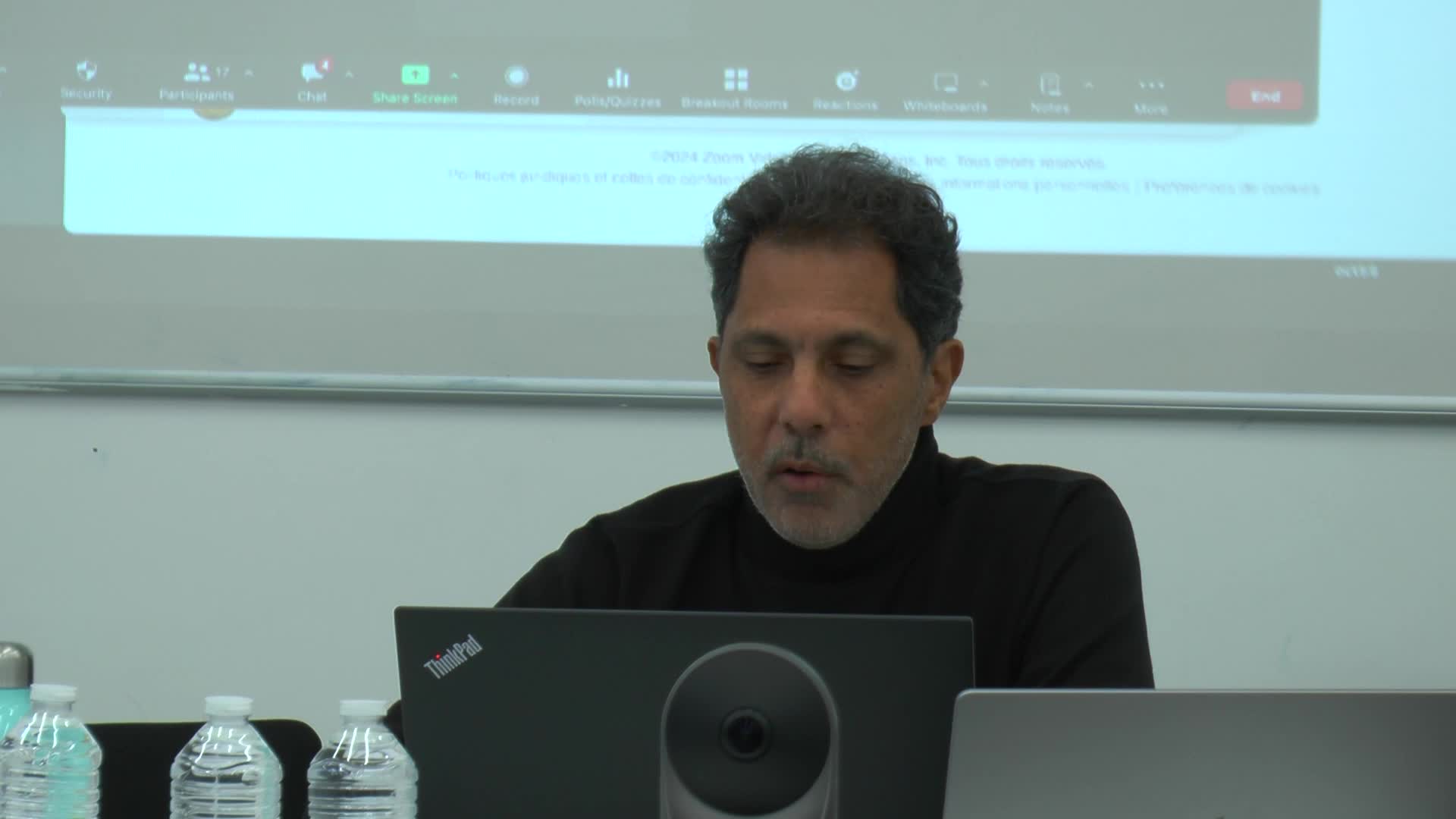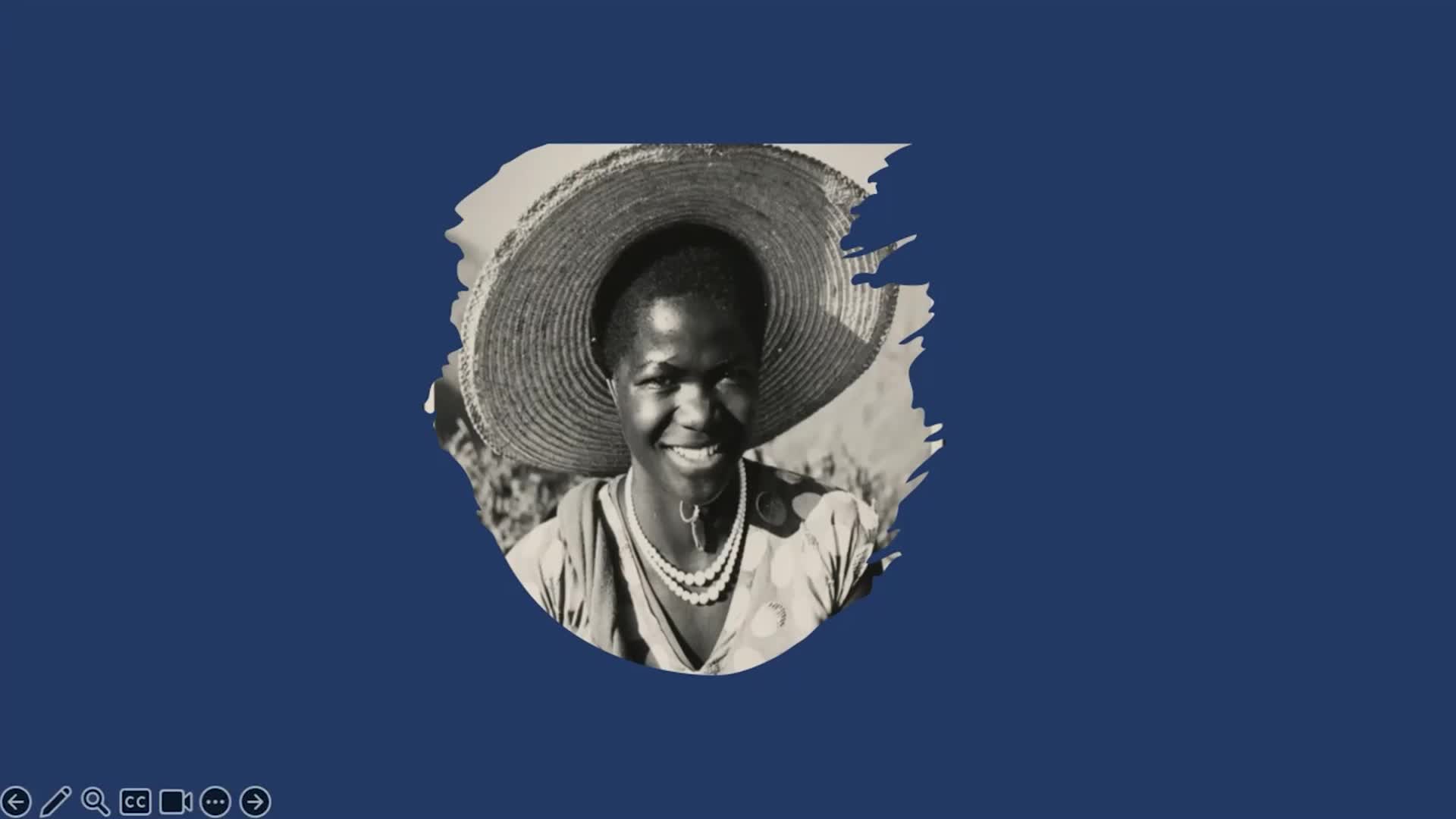Notice
Creative Methodologies - Writing the stories of working women from popular classes in African urban milieux, 1920 - 1970 - Partie 5
- document 1 document 2 document 3
- niveau 1 niveau 2 niveau 3
Descriptif
Creative Methodologies - Writing the stories of working women from popular classes in African urban milieux, 1920 — 1970 - Partie 5
Emma Hunter, University of Edinburgh
Swahili Language Newspapers and the History of Urban Working Women in Mid-twentieth-century Tanzania
This paper seeks to contribute to the workshop’s discussion of creative methodologies for writing the history of working women and their role in the making of colonial and post-colonial urban fabrics through a discussion of what we can learn about the lives and experiences of urban working women in Tanzania from Swahili language newspapers, as well as the methodological challenges involved in using newspapers in this way. The paper focuses on two Swahili-language newspapers, the Chagga Council district newspaper Komkya, (later renamed Kusare) and the Catholic newspaper Kiongozi. Both of these newspapers had ‘Women’s Pages’, which served to foreground the new professional opportunities which women were seizing and the professional spaces which women were moving into in the 1950s and 1960s. At the same time, the wider newspaper and particularly the ‘letters to the editor’ pages were revealing of some of the tensions which these social, cultural and economic changes provoked.
Elara Bertho, Laboratoire Afriques dans le Monde, Bordeaux
Can Literature Rescue History? Paradoxes in Subalterns' Voices (Guinea, 1970s)
Heather Sharkey, University of Pennsylvania
“The Guide to Modern Cooking”: Tracing the History of Sudanese Women’s Labor through a Home Economics
Textbook
How and where can we trace the history of “working women” – and of women working – when sources seem limited or lacking? I address this question for Sudanese history by considering one Arabic book which offers insights into female labor within households. Called Dalil al-tahi al-hadith, or “The Guide to Modern Cooking,” this volume was a textbook and cookbook, which the Sudanese government published in 1973. Its authors, Madina Babikr al-Ghali and Nafisa Khalil Jabbara, included abundant recipes, not only for food but also for household cleaning products. They covered diet, nutrition, and exercise, too, and set out “advice for arranging the home.” Their intended readers were young women studying college-level home economics. Fifty years ago, this book – a cheap black-and-white edition with cartoon-style illustrations – would have circulated widely in Sudanese classrooms. But today, “The Guide to Modern Cooking” is rare. WorldCat, which is the union catalogue for tens of thousands of libraries around the world, registers only one copy anywhere – at the Library of Congress in Washington, DC. Now recognizing the singularity of this book, the Library of Congress refuses to lend it through the American “Inter-Library Loan” system, so that researchers can only read it in situ. The rarity of “The Guide to Modern Cooking” serves as a metaphor for the often-invisible and hard-to-reach history of women. Historians agree that cookbooks have been highly “gendered” texts, associated with female domestic food preparation and undervalued as scholarly texts. These assumptions explain why few academic institutions have consistently collected and catalogued cookbooks, and why an Arabic book like this one may have become ephemeral. I will argue that “The Guide to Modern Cooking” built on British and Egyptian colonial legacies in the field of Sudanese female education and labor going back to the 1920s, ‘30s, and ‘40s and that it has many lessons to impart. It reveals attitudes towards domesticity and beauty and emphasizes the importance of Sudanese women as guardians of familial health and hygiene. It yields information about food and cuisine as well as technology and material culture (for example, in the form of refrigerators and kitchen stoves). It also offers insights into the history of nationalism and class dynamics. When it appeared in 1973 (during the lull between the first and second Sudanese civil wars), opportunities for female secondary and higher education were expanding. Against this context, the book appealed to members of Sudan’s aspirational Muslim middle classes. These young women wanted to be wise and refined; modern yet respectful of traditions (for example, by observing Ramadan fasts). At the same time, they expected to lead lives that would entail significant day-to-day work in the form of preparing food, washing clothes, supervising children, and more. In short, I will argue, by creatively using a textbook and cookbook like this one, we can make visible the history of women and their labor.
Mariam Sharif, EHESS
The history of nursing: education, practices, work and political participation in Sudan from 1899-1970s - PhD Research Project
Medical sociology and anthropology have made much use of grounded theory, which derives its concepts from direct observation of practices, as everyday work is full of routine and small variations. The historical study of professional work confronts thus with complications, as many everyday practices are rarely documented. This is even more the case with women’s work, which has long been neglected, and especially with professions that have long been considered to be peripheral. In this sense, a history of nursing is an extraordinary challenge, most of all in a context where historiography is still limited and/or very focused on limited issues, such as Sudanese historiography. The few major works on medical history that exist, for instance, have little to say about other than medical doctors and laboratory science. There are, however, important reasons to study women’s labor in general and medical work in particular, for both colonial and postcolonial history. The professional education and related behavior of women was not only one of the central elements of the British ‘civilizing mission’ but continued to be an important issue in both gender and labor politics after independence. At the same time, while there are some iconic female figures in the history of the independence movement, as well as the early parliaments, their overall role and contribution as intellectual and activist personalities as well as sustainers of everyday life is strongly underrepresented. A focus on nursing can contribute much to challenge these gaps. Since both men and women were educated and working as nurses, the details of gendering professions can be traced well. Looking closely at involved institutions, such as the nursing college in Khartoum, allows differentiated analysis how and which students were accepted in terms of belonging, socio-economic status, and gender. This can be related to the general infrastructure, educational and development politics of the colonial postcolonial states, e.g. vis-à-vis missionary schools and Arabicization; this also implies look at the geographical distribution of medical care and the underlying rationale. An even greater level of detail can be achieved by an additional biographical study of biographies of nurses who represent different level of education, practices and generation. A closer look at nursing as professional status and social role needs to discuss precolonial, colonial and postcolonial notions of care for the sick, the wider meaning of the Arabic term mumarriḍ. This concerns not only the introduction of biomedical norms of professional identity, in relation to previous forms of knowledge and practice. This looks also at the hierarchies they come with (medical doctor, medical assistants, nurses, midwives), both in salary structure and prestige as well as in society’s acceptance or suspicions. There is a chance here to discuss questions of gender, race, belonging, and labor together. But there is also an important aspect of political participation. Nurses, as part of a new, British- educated stratum in society, formed part of transformations in the way political participation was understood and undertaken. This is not only regarding the development towards unions, where both the nurses’ union and individual nurses as influential members in other unions are to be considered. The role both can play and have played in politics was beyond the reform of working conditions or other labor rights; it extended to political action towards changing the government or regime. But this historical role remains merely indicated from anecdotal evidence that needs deeper study and analysis.
Intervention / Responsable scientifique
Thème
Documentation
Dans la même collection
-
Creative Methodologies - Writing the stories of working women from popular classes in African urban…
NewburyDarrenHeuvelDanielle van denÉcrire les histoires de femmes travailleuses issues des classes populaires dans les milieux urbains africains, 1920 - 1970 - Partie 2
-
Creative Methodologies - Writing the stories of working women from popular classes in African urban…
HugonAnneSahledengilTirsitGuidiPierreVezzadiniElenaÉcrire les histoires de femmes travailleuses issues des classes populaires dans les milieux urbains africains, 1920 - 1970 - Partie 6
-
Creative Methodologies - Writing the stories of working women from popular classes in African urban…
Meier zu SelhausenFelixSilvaFilipa Ribeiro daGibbsTimothyCristofaroDomenicoÉcrire les histoires de femmes travailleuses issues des classes populaires dans les milieux urbains africains, 1920 - 1970 - Partie 3
-
Creative Methodologies - Writing the stories of working women from popular classes in African urban…
NieftagodienNoorDarkwahAkosua K.Écrire les histoires de femmes travailleuses issues des classes populaires dans les milieux urbains africains, 1920 - 1970 - Partie 1
-
Creative Methodologies - Writing the stories of working women from popular classes in African urban…
NyantoSalvatory S.SimbaAlmaWorku KebedeDanielTiwaah Adu BohaenJulietÉcrire les histoires de femmes travailleuses issues des classes populaires dans les milieux urbains africains, 1920 - 1970 - Partie 4


